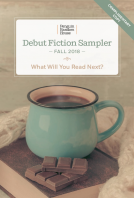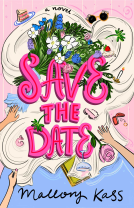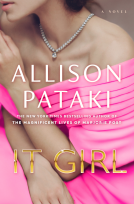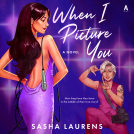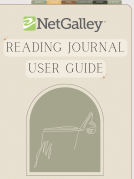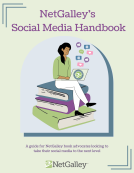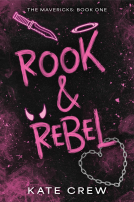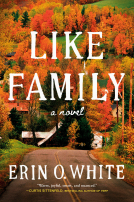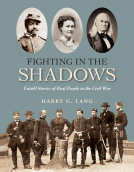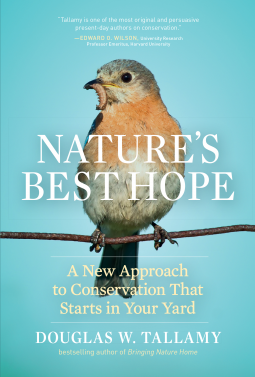
Nature's Best Hope
A New Approach to Conservation That Starts in Your Yard
by Douglas W. Tallamy
This title was previously available on NetGalley and is now archived.
Send NetGalley books directly to your Kindle or Kindle app
1
To read on a Kindle or Kindle app, please add kindle@netgalley.com as an approved email address to receive files in your Amazon account. Click here for step-by-step instructions.
2
Also find your Kindle email address within your Amazon account, and enter it here.
Pub Date Feb 04 2020 | Archive Date Feb 04 2020
Talking about this book? Use #NaturesBestHope #NetGalley. More hashtag tips!
Description
From the New York Times bestselling author of Bringing Nature Home comes an urgent and heartfelt call for a new approach to conservation—one that starts in every backyard.
Douglas W. Tallamy’s first book, Bringing Nature Home, awakened thousands of readers to an urgent situation: wildlife populations are in decline because the native plants they depend on are fast disappearing. His solution? Plant more natives. In this new book, Tallamy takes the next step and outlines his vision for a grassroots approach to conservation. Nature’s Best Hope shows how homeowners everywhere can turn their yards into conservation corridors that provide wildlife habitats. Because this approach relies on the initiatives of private individuals, it is immune from the whims of government policy. Even more important, it’s practical, effective, and easy—you will walk away with specific suggestions you can incorporate into your own yard.
If you’re concerned about doing something good for the environment, Nature’s Best Hope is the blueprint you need. By acting now, you can help preserve our precious wildlife—and the planet—for future generations.
“Tallamy lays out all you need to know to participate in one of the great conservation projects of our time. Read it and get started!” —Elizabeth Kolbert, Pulitzer Prize-winning author of The Sixth Extinction
Available Editions
| EDITION | Other Format |
| ISBN | 9781604699005 |
| PRICE | $30.00 (USD) |
| PAGES | 256 |
Average rating from 21 members
Featured Reviews
 Carol D, Reviewer
Carol D, Reviewer
I do have several friends who are always researching how they can help protect and conserve wildlife. This is the perfect gift for them! Everyone can do a little more. When we think of buying plants for our yard or garden we should also give thought to those plants that will help the environment and not purely decorate it. If we have a responsible attitude now, generations coming after us will develop even more positive ideas. I particularly loved the introduction in the book, so much information and so easily digestible.
I voluntarily read and reviewed an advanced copy of this book. All thoughts and opinions are my own.
 Meagan B, Librarian
Meagan B, Librarian
This was a really interesting read for me. I love nature and am always looking for new ways to help conservation efforts locally. I recommend this book to everyone and I will be buying it for our library. I know we have patrons who will love it and take the knowledge to heart.
 Kim C, Educator
Kim C, Educator
Everyone knows our planet is in trouble. Our ecosystems are facing major issues across the globe. We have created many areas that are fairly barren of native species. In turn, the pollinators, insects, and other animals that depend on those native species are being lost. One major contributing factor is that we’ve adopted so many non-native plant species in our landscaping. These plants did not originate on this continent and the native bees and other species here are not adapted to those plants, so they often can’t use them for food or to gather pollen.
In the book, Nature’s Best Hope, author Douglas Tallamy proposes a way to fix this problem. How? By creating what he calls the Homegrown National Park. This park would not be located in one particular place. Rather, it would be a continent-wide use of space currently used to grow non-native plants converted back to growing native plants. Sounds simple, right? Well, it is, but we need to learn how to do it and then actually do it for it to be effective.
The idea itself is a good one, and it can be done. We just need to have the knowledge and the desire to make it happen. We’ve got to convince homeowner associations that planting a whole bunch of non-native trees, shrubs, and flowers will have no benefit for bees and birds. We need to give our wild species the plants that they would have had in our regions before we humans removed those plants and planted the non-native ones in their place. We complain about the loss of birds, and the fact that we no longer hear crickets in our towns, but this is the reason, and we are responsible for doing something to remedy the problem we created.
This book takes you step-by-step through the entire process. The author begins by presenting the issue. He does an excellent job of showing how this problem came about. He describes the biology of the species of birds, bees, and others that are being affected. Then, he describes how we can change the outcome by changing a few species that we plant in our gardens and public spaces. He shows how it can be done while still maintaining the attractive open spaces that everyone wants. It will mean less lawn and more native plants, but that can be done. Plenty of examples of very attractive landscapes are shown in the photos to prove that this concept is something that anyone can do. Native plants are very attractive in their own way, and there are plenty of them to choose from.
There are some key species of plants that will help many native wildlife species survive, and those are described. The author gives the families of these plants, which can be planted across the continent. Obviously, an oak species native to the west coast would not be the same on the east coast, but there are native oaks for each region that would be appropriate to plant and grow.
Other features of the landscape can help our native wildlife. One suggestion that I liked in the book was to install a bubbler in your backyard to give wildlife a place to drink. The design shown in the photo is really beautiful and it looks simple to build. Plus, it has the added benefit of attracting birds and helping them survive!
It’s not just the local wildlife that will benefit either. There are plenty of migrating birds that pass through our towns each year. These birds need food and water and a place to rest. If we create Homegrown National Park, they will find these places all along their long journey.
What better way to help wildlife than to make some simple changes to your landscaping and plant native species? If we all do this, we might be able to reverse the decline in bird and bee species and actually do something to help the ecosystem. In my opinion, that’s the perfect thing to do.
When growing up, I had heard about conservation but never anything I thought I had a part in personally. As an adult, tried to only plant species native to where you I lived. This book goes beyond taking a back seat to the environment but to be an active participant in the world in which I live. It is imperative that all of us educate ourselves and become more involved in the space we occupy on this place called planet earth.
I did not finish this book. I was about half way through when it expired. I was enjoying and sorry I did not get to the part with ideas of how to do more. I feel my family is on the path but I will have to wait to finish the book before I am certain. Great history in the beginning and what I liked most about this book is that it wasn’t all dooms-day scenarios. There is always hope to stop the damage.
 Maryann P, Reviewer
Maryann P, Reviewer
Nature's Best by Douglas Tallamy is an excellent resource to assist the reader in making your backyard a place that can be used to help with the conservative movement. There is also information that can be learned to attract birds in enviromentqlly friendly ways. It would take a very long time to research all the information that is found in this book. It seems appropriate to give this author credit for writing a unique and well done novel that can help the average person help to make their surroundings more environmentally friendly and more beneficial to many species of animals.
 Donna M, Librarian
Donna M, Librarian
This book makes a compelling argument for building corridors of native plants to help sustain a struggling environment. It made me research what plants I could plant in my yard to contribute to this important movement. It really gives food for thought, but also provides a concrete plan for individuals and communities faced with a climate emergency. The book's concrete suggestions can help reduce some of the helplessness people feel when faced with such an immense problem: these are little steps that can make a real difference.
 Jennifer S, Bookseller
Jennifer S, Bookseller
My thanks to NetGalley and Timber Press for an eARC copy of this book to read and review.
I was hoping more for each chapter to be "step X, do this", with the chapter then delving into what to do and how to do it. What I got was that information integrated into a mini history lesson (which basically talked about how humans suck and ruined things) and then some stories of how the ideas to fix things were implemented by others. No real "how to" with a step by step guide, it was interwoven into the entirety of the chapter. Not a bad way to get the information across, but I was expecting more of a list of steps with examples, so this didn't work for me so well.
Personally, I have to be careful with the non-fiction I read, especially the stuff that deals with the ecology or politics. Both upset me and make me hate humanity, because usually the books go out of their way to make humans look like a bi-pedal cancer to the planet and others.
We are, but I don't want to have to read about the problem, I want to read how to solve the problems this bi-pedal cancer makes.
The last chapter goes into the solution, but very, very briefly. There are some common Q&As listed in the back and a few of them were really quite good, but it didn't make up for what I wanted from this book.
The positives, this book was detailed in how things went bad and steps made by others to fix things. The pictures were really quite stunningly beautiful. Lots of notes and he did list out solutions that are manageable on a personal scale, just not enough for my taste.
This is a good book, just not what I was looking for. It seems his first book might be more along the lines of what I want, so I will be checking that one out definitely. While I wasn't feeling this book, I can see that it is a 4 star. Recommended for ecology conscience people who want to make a difference and can stomach reading about how we right and proper messed things up to begin with.
 Joanna M, Educator
Joanna M, Educator
I highly recommend this book and will be purchasing at least one copy as a gift! An easy-to-read book that offers advice for improving our environment and yards to support animals and our climate. I can't wait to plant some milkweed this spring and hope to see many more Monarch butterflies!
Thank you, Timber Press and NetGalley for a digital ARC!
 Nora B, Educator
Nora B, Educator
Tallamy lays out all you need to know to participate in one of the great conservation projects of our time. Read it and get started!” —Elizabeth Kolbert, Pulitzer Prize-winning author of The Sixth Extinction
After reading this blurb, I was curious and wanted to learn what can we do, to help and participate in conservation. Tallamy gives us some resources to start in our own garden.
Easy read, clear examples and a doable approach .
 Librarian 105878
Librarian 105878
I've read a few books that bring to light environmental concerns with proposals for how to turn things around. But usually those plans are larger than I'm comfortable taking on, or, I'm sad to admit, more time-consuming than I'm really willing to give.
In Douglas W. Tallamy's <em>Nature's Best Hope</em>, the answers to to restoring an eco-system are right in our own back yards. Literally.
A good portion of the book is Tallamy addressing the problems and how the problems started (no surprise - it's us). While intellectually I knew some of this (home yard care and looking good for the neighborhood, for instance) it was a good reminder as to what kind of havoc a little vanity might be causing.
The biggest problem that I usually have this kind of book is that they tend to be depressing ... problem, problem, problem, we're in trouble ... and then the 'solutions' are typically out of reach for the average person, or they involve an extraordinary change in one's personal behavior or habits. But while the problems are well addressed (in this layman's eyes, anyway) here and thorough, what I appreciated most were some of the potential solutions to the problems.
While the idea of "Homegrown Nation Parks" is a little bit gimmicky, the idea is easy to remember and is ultimately a useful tool. The idea is, in a nutshell, to restore our yards to to their natural environments. But just in case even this is too much (or possibly forbidden by homeowners associations), Tallamy encourages taking a corner of a yard and putting in native plants even if they aren't the prettiest (or what the local landscaper recommends). The native plant could bring back native insects, which bring back native birds and wildlife.
It's a pretty simplistic approach but that's precisely what I like about this book. It isn't filled with doom and gloom and it presents a do-able plan that should make us feel good about doing something positive.
Looking for a good book? <em>Nature's Best Hope</em> by Douglas W. Tallamy is a backyard, encouraging, can-do environmental book.
I received a digital copy of this book from the publisher, through Netgalley, in exchange for an honest review.
 Tara H, Librarian
Tara H, Librarian
I received an arc of this title from NetGalley for an honest review. I think this is a great gift book for those who love nature, animals, birds and want to make a difference in the world.
 Traci W, Educator
Traci W, Educator
I think one of the many things we have learned during the pandemic is that we can make a difference on the planet. The few weeks/months that people stayed at home made a huge an visible difference on the environment. This book comes at a perfect time: one where we need to start making changes, even small ones ourselves, in little ways in our backyard, to save our planet. The book is well-done, with lots of good tips and advice. I enjoyed reading it, and look forward to putting it into practice.
